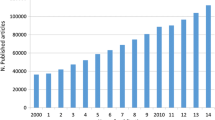Abstract
Prognostic studies are studies that examine selected predictive variables or risk factors and assess their influence on the outcome of a disease. They allow clinicians to understand better the natural history of a disease, guide clinical decision-making by facilitating the selection of appropriate treatment options, and allow more accurate prediction of disease outcomes. Appraising prognostic studies involves determining the internal validity of the study design and evaluating the influence of systemic errors or bias. In studies examining multiple prognostic variables, care must be taken to minimize the confounding influence each variable would have on the other parameters. Evaluating the results of appropriate statistical analysis enables conclusions to be made that may influence clinical practice. Care must be taken to ensure that the conditions under which the prognostic study were conducted resemble circumstances in the local institution so as to allow the conclusions to be applied to local practices.
Similar content being viewed by others
References
DG Altman (2001) ArticleTitleSystemic reviews of evaluations of prognostic variables B. M. J 323 224–228
JC Ranson KM Rifkin DF Roses et al. (1974) ArticleTitlePrognostic signs and the role of operative management in acute pancreatitis Surg. Gynecol. Obstet 139 69–81 Occurrence Handle4834279
M Larvin M McMahon (1989) ArticleTitleAPACHE-II score for the assessment and monitoring of acute pancreatitis Lancet 2 201–205 Occurrence Handle10.1016/S0140-6736(89)90381-4 Occurrence Handle2568529
A Pisanu A Cois A Uccheddu (2004) ArticleTitleSurgical treatment of perforated diverticular disease: evaluation of factors predicting prognosis in the elderly Int. Surg 89 35–38 Occurrence Handle15085996
DL Sackett WS Richardson W Rosenberg et al. (1997) Evidence-based Medicine: How to Practice and Teach EBM Churchill Livingstone New York
A Laupacis G Wells S Richardson et al. (1994) ArticleTitleUsers’ guides to the medical literature. V. How to use an article about prognosis J. A. M. A 272 234–237 Occurrence Handle8022043
P Juni DG Altman M Egger (2001) ArticleTitleAssessing the quality of controlled clinical trials B. M. J 323 42–46
M Acalovschi D Blendea C Feier (2003) ArticleTitleRisk factors for symptomatic gallstones in patients with liver cirrhosis: a case-control study Am. J. Gastroenterol 98 1856–1860 Occurrence Handle12907344
MA Memon NJ Cooper B Memom et al. (2003) ArticleTitleMeta-analyses of randomized clinical trials comparing open and laparoscopic inguinal hernia repair Br. J. Surg 90 1479–1492 Occurrence Handle10.1002/bjs.4301 Occurrence Handle14648725
A Czechowski A. Schafmayer (2003) ArticleTitleTAPP versus TEP: a retrospective analysis 5 years after laparoscopic transperitoneal and total endoscopic extraperitoneal repair in inguinal and femoral hernia Chirurg 74 1143–1149 Occurrence Handle10.1007/s00104-003-0738-z Occurrence Handle14673537
R Lilford D Braunholtz J Harris et al. (2004) ArticleTitleTrials in surgery Br. J. Surg 91 6–16 Occurrence Handle10.1002/bjs.4418 Occurrence Handle14716788
DJ Gouma RC Geenen Particlevan TM Gulik Particlevan et al. (2000) ArticleTitleRates of complications and death after pancreaticoduodenectomy: risk factors and the impact of hospital volume Ann. Surg 232 786–795 Occurrence Handle10.1097/00000658-200012000-00007 Occurrence Handle11088073
H Ueno H Mochizuki Y Hashiguchi et al. (2004) ArticleTitlePredictors of extrahepatic recurrence after resection of colorectal liver metastases Br. J. Surg 91 327–333 Occurrence Handle10.1002/bjs.4429 Occurrence Handle14991634
CJ Bulpitt (1987) ArticleTitleConfidence intervals Lancet 1 494–497 Occurrence Handle10.1016/S0140-6736(87)92100-3 Occurrence Handle2881050
MJ Gardner DG Altman (1986) ArticleTitleConfidence intervals rather than P values: estimation rather than hypothesis testing B. M. J 292 746–750
HJC Ranson (1979) ArticleTitleThe timing of biliary surgery in acute pancreatitis Ann. Surg 189 654–662 Occurrence Handle443917
Author information
Authors and Affiliations
Corresponding author
Rights and permissions
About this article
Cite this article
Mak, K., Kum, C.K. How to Appraise a Prognostic Study. World J. Surg. 29, 567–569 (2005). https://doi.org/10.1007/s00268-005-7914-x
Published:
Issue Date:
DOI: https://doi.org/10.1007/s00268-005-7914-x




